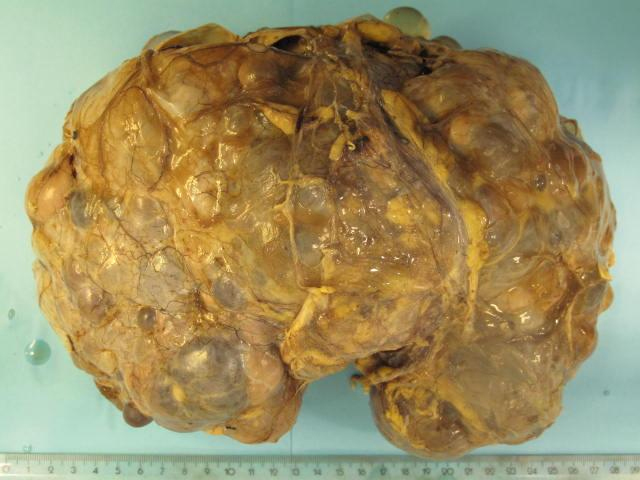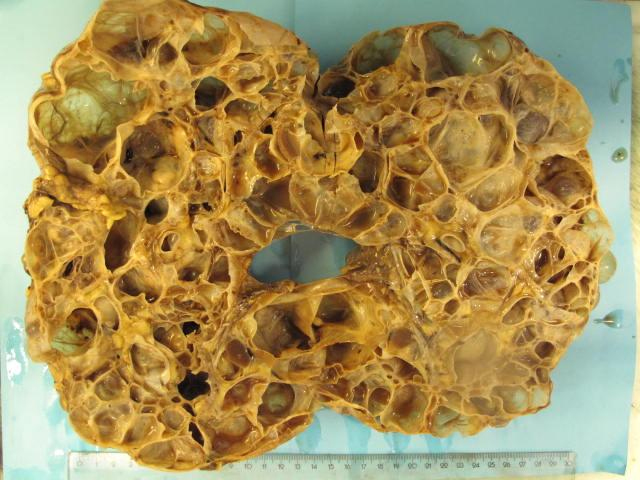Autosomal dominant polycystic kidney disease (ADPKD)
Introduction
ADPKD is the most common genetic form of kidney disease. The prevalence of the disease is relatively uniform throughout the world and is rated at 1: 400- 1: 1000. Most people with the disease will need kidney replacement therapy during their lifetime and ADPKD is due to disorder in approximately 10% of patients who end up in renal replacement therapy in Norway. Causes
Mutations in the gene that encodes polycystin been shown in patients with ADPKD. This leads to cystedannelser in tubulisystemet and progressively nefrotap. Pathology
 |  |
| Surface | Cross section |
Clinical presentation
Renal function is often not appointed until after the age of 40, but this can vary from family to family. Patients may present with hypertension, renal failure or abnormal urinary findings. Hypertension is present in the vast majority before kidney failure is measurable. Flank pain due cyst bleeding, kidney stone pain and UTI are the most common symptoms presented by patients. Urinary Findings
Often sparse, although hematuria and proteinuria lettgradig may occur. Course and treatment
Most are in need of renal replacement therapy during their lifetime. The main risk factors for rapid progression are genetic factors, hypertension and proteinuria. No specific treatment against the disease exists. Blood Pressure Treatment is important to limit the progression rate and blood pressure should be treated aggressively An inhibitor of RAAS system should be part of the antihypertensive regimen. Incidentally, ADPKD a system disease which also affects other organs with cyst formation that can cause problems and complications. Cysts in the liver and pancreas are most common. Vascular intracranial aneurysm bleeding is more common in kidney patients cyst and also heart valve disease. By familial history of intracranial hemorrhage, it is 20% chance of finding a intracerebral aneurysm and screening with MRI of the head should be considered. Cardiovascular disease is most common cause of death. Cholesterol-lowering therapy belongs in the treatment of ADPKD patients with adequate blood pressure treatment.
Read more about ADPKD
UpToDate



